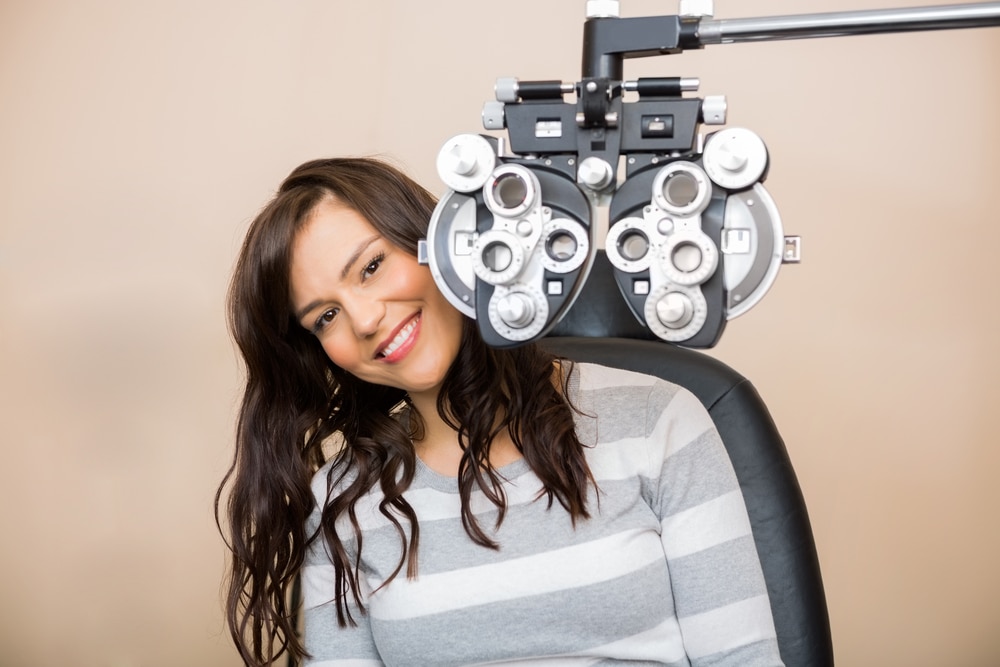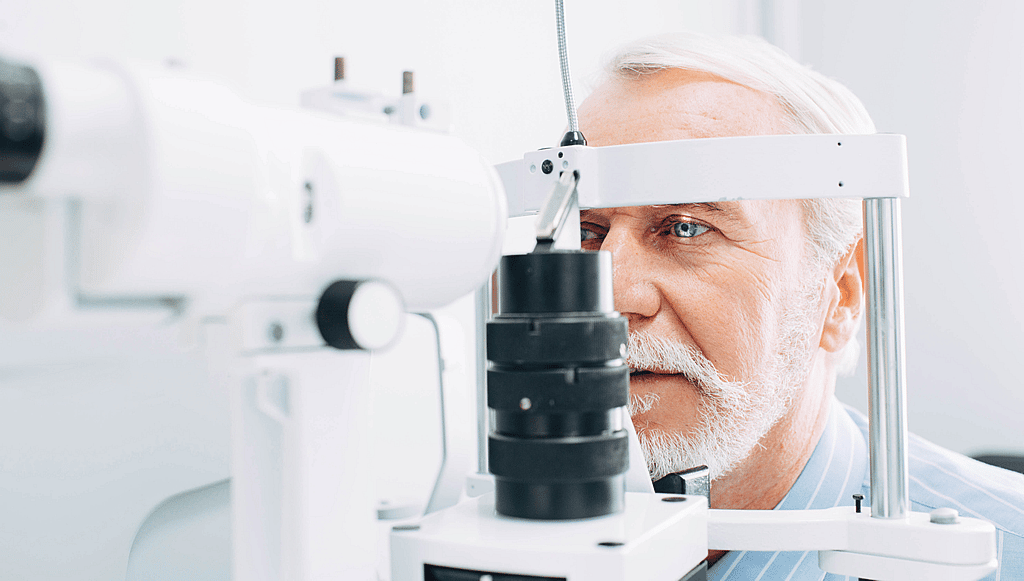Comprehensive Eye Exams

Your eyes are a crucial part of how you experience the world. To keep them happy and healthy, seeing an eye doctor for routine eye exams is best, no matter how old you are. At Eye Center of St. Augustine, our expert team of ophthalmologists is here to care for your eyes with warmth and compassion.
Why are Routine Eye Exams Important?
Routine eye exams are the only way your eye doctor can ensure your eyes are healthy and working correctly. Eye exams are also the only way to ensure that you don’t have any age-related eye conditions like cataracts, glaucoma, or age-related macular degeneration.
If you have one of these conditions, early diagnosis is best to ensure timely treatment and save your remaining vision. Additionally, a routine eye exam will allow your Eye Center of St. Augustine ophthalmologist to check your current prescription.
If you already wear glasses or contact lenses, a routine eye exam will ensure you have the most up-to-date prescription possible. Your prescription will often change, making regular eye exams an excellent way to update your prescription regularly.
Walking around with an outdated prescription may lead to uncomfortable symptoms like eye strain, headaches, or a general feeling of being unable to see. For contact lens wearers, you must have an updated prescription from your eye doctor annually before buying new boxes, making regular eye exams necessary.
Staying up to date on your prescriptions for glasses and contact lenses will ensure you can see no matter which visual aids you use.
How Often Do I Need Eye Exams?
How often you need eye exams depends on many things, including your age, refractive errors, family history, and recommendations from your ophthalmologist. However, the American Academy of Ophthalmology recommends the following schedule for adults:
Baseline Eye Exams for Adults
If you have healthy eyes and good vision, meaning you don’t need to wear glasses or contacts, you should have a routine eye exam with your ophthalmologist once in your twenties. You should see your ophthalmologist twice in your thirties for a routine eye exam.
After you turn forty, you should schedule a routine eye exam with your eye doctor. Forty is a crucial age for eye health because it’s when you may start showing signs of age-related eye conditions. You may also begin seeing changes in your vision. Early diagnosis is the best way to preserve your vision.
Exceptions to Baseline Eye Exams for Adults
Seeing your eye doctor for a routine eye exam a few times in your twenties and thirties does not apply to everyone. See your eye doctor if you notice any eye pain or have an infection.
You should see your ophthalmologist annually to ensure your prescription stays current if you wear contact lenses. For patients with diabetes or a known family history of eye conditions, it’s best to talk to your eye doctor about how often you should schedule routine eye exams.
Routine Eye Exams for Seniors 65 and Older

For seniors 65 and older, eye doctors and the American Academy of Ophthalmology recommend more frequent routine eye exams. They should plan on coming in for an exam to have their eyes checked every year or two.
During the routine eye exam, your ophthalmologist will check for signs of eye conditions. These include cataracts, glaucoma, diabetic retinopathy, and age-related macular degeneration.
When Should I Bring My Child in for Routine Eye Exams?
Although it may be some time before your child needs a routine eye exam, vision screenings are still essential to keeping their eyes healthy. Both the American Academy of Ophthalmology and the American Association for Pediatric Ophthalmology and Strabismus recommend parents follow this schedule:
Newborn
After your infant is first born, a doctor or another trained health professional should examine their eyes. A comprehensive or routine eye exam is only necessary if your baby was born prematurely, has visible signs of eye disease, or has a known family history of childhood eye conditions.
6-12 Months
Once your child reaches 6-12 months, you’ll want to schedule a second vision screening. They’ll complete tests like shining a light in the eyes to see if it returns a red reflex and testing pupil and blink response. Your child’s pediatrician or another health care professional should also visually inspect their eyes and check that they align and move correctly.
12-36 Months
You’ll bring your child in between 12 and 36 months to have their eyes checked for healthy development. Tests may include using a photoscreening test to take pictures of your child’s eyes.
These pictures can help diagnose problems like amblyopia. If any issues are observed during this test, your child may get referred to an ophthalmologist.
3 to 5 Years Old
Between 3 and 5 years old, you should have your child’s eye alignment and vision checked. An ophthalmologist can do this, as well as their pediatrician, family doctor, optometrist, or orthoptist.
Bring your child in to have their visual acuity tested as soon as they are old enough to read an eye chart. You should bring them in to see an ophthalmologist if their vision screening shows signs of problems like:
5 Years and Older
At 5, bring your child in for visual acuity and alignment screening. The most common eye condition for children in this age range is nearsightedness, which your ophthalmologist can correct with glasses.
If your child shows any signs of misalignment or other eye conditions, have an ophthalmologist examine their eyes. A vision screening can be helpful for younger children, but as they age, it will not replace the need for routine eye exams.
A routine eye exam diagnoses eye diseases using eye drops to dilate the pupil. Dilating the pupil gives your ophthalmologist a more comprehensive range of vision inside the eye and its structures.

What to Expect at a Routine Eye Exam
If you’ve never had a routine eye exam or want to know what to expect, a routine eye exam is the best way to check that your eyes are healthy. They consist of the following:
Medical History
Before your routine eye exam, a staff member of the Eye Center of St. Augustine will ask about your medical history. They will also ask about your current medications and if you wear glasses or contact lenses.
Visual Acuity
To determine visual acuity, your eye doctor will have you read from an eye chart to measure how well you can see at various distances. You’ll cover one eye while testing the other to determine if you have 20/20 vision or not.
Your Prescription
If you need glasses or contact lenses, your ophthalmologist will determine this by having you look through a phoropter. The phoropter contains several lenses and will show the best prescription for you.
Your Pupils
To test how your pupils respond to light, your eye doctor will shine a bright beam of light. Your pupils should respond by getting smaller.
Peripheral Vision
You’ll have your peripheral vision tested because losing your side vision is often a symptom of glaucoma. Testing your side vision can help find eye problems you may be unaware of having.
Eye Movement
Your ophthalmologist will test how your eyes move by using a test called ocular motility. Ocular motility allows your eye doctor to see if your eyes are in proper alignment and that your eye muscles work as they should.
Intraocular Pressure
Your eye doctor will test your eye’s intraocular pressure (IOP) with a test called tonometry. Tonometry may use a pressure-sensitive tip applied near or against your eye to measure pressure in your eye. If your IOP is too high, this can be a sign of glaucoma.
Front of Your Eye
To look at the front of your eye, your ophthalmologist will use a slit-lamp microscope. The slit-lamp microscope gives them access to the iris, cornea, lens, and eyelids. It also allows them to check for scratches or abrasions on the cornea and cataracts.
Retina and Optic Nerve
To examine the optic nerve and retina for signs of damage, your eye doctor will dilate your eyes using eye drops. Dilating your eyes widens your pupils and allows them the greatest access to these parts of your eye.
Your ophthalmologist at Eye Center of St. Augustine may suggest other tests during your routine eye exam. Each patient’s experience is different and depends on their eyecare needs.
Do you need an eye exam? Today, schedule your routine eye exam at the Eye Center of St. Augustine in Palm Coast, FL!





